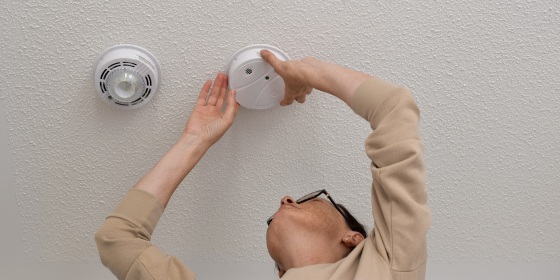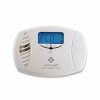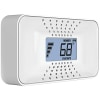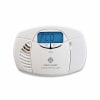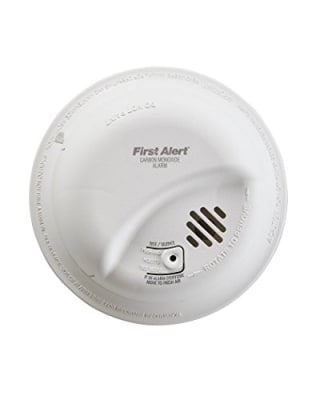Carbon monoxide (CO) is an odorless, colorless and toxic gas that causes hundreds of unintentional deaths a year, according to the Centers for Disease Control and Prevention (CDC). The gas is invisible to our eyes and CO poisoning symptoms are flu-like, which is why it can sometimes go unnoticed. That’s why a carbon monoxide detector is essential for any living space. We collected CO guidance from government agencies like the CDC and U.S. Environmental Protection Agency (EPA), and recommend top-rated CO detectors below.
Want more from NBC Select? Sign up for our newsletter, The Selection, and shop smarter.
Carbon monoxide is an odorless, colorless and toxic gas. Common household sources of carbon monoxide include fuel-fired heating and cooking appliances like gas space heaters, gas stoves, gas grills, gas water heaters and improperly vented fireplaces, to name a few. CO can accumulate to dangerous levels when any fuel-fired combustion source is used improperly and not adequately vented to the outdoors, says Carolyn Holran, the press secretary at the EPA.
Inhaling CO can cause a variety of symptoms (more on those later), but inhaling a lot of CO can cause you to pass out and may kill you, according to the EPA and CDC.
Carbon monoxide detectors tend to look similar to each other and often don’t have specific product names, just model numbers like CO615 or C05120BN, which makes buying one even more confusing. We picked CO detectors based on the following criteria:
- Certifications: All of our picks are certified to UL 2034, a recognized safety standard from Underwriters Laboratories, an independent global safety science company.
- Power supply: We include carbon monoxide detectors that can be powered by different kinds of sources, including plug-in and battery-powered models.
- Extra features: We also noted useful extra features like an LED screen and battery backups in our selection.
Most of our top picks come from two well-known safety brands: First Alert and Kidde. We selected models with at least a 4.5-star average rating from hundreds of reviews on online storefronts like Amazon.
Plug-in pick
Plug-in CO detectors are convenient because you can place them wherever you have a wall outlet. This model also has a battery backup (powered by two AA batteries), so it will keep running even during a power outage. The LED screen indicates backup battery level as well as CO levels. The brand also makes a lower-priced version without a screen.
Travel pick
If you are a frequent traveler and often find yourself staying in short-term lodging, consider bringing this portable CO detector with you. In the US, only 14 states require CO detectors in temporary lodging, and a lack of CO detectors has led to hospitalization and deaths locally and abroad. It has a built-in lithium battery with up to 10 years of battery life.
Battery-powered pick
If you need a CO detector for an area of your home that does not have a wall outlet or hardwire option, consider a battery-powered model like this one from First Alert. It runs off of two AA batteries, included in the box.
For hardwiring
If you prefer hardwiring your CO detector, this model is a good fit, plus it has a battery backup through a regular 9V alkaline battery. It doesn’t have a screen — push and hold the single button to test the alarm, or push it once to silence the low-battery chirp.
At NBC Select, we work with experts who have specialized knowledge and authority based on relevant training and/or experience. We also take steps to ensure all expert advice and recommendations are made independently and without undisclosed financial conflicts of interest.
- Carolyn Holran is the press secretary at the Environmental Protection Agency (EPA).
I’m a reporter at NBC Select who covers technology and fitness including recent stories on air purifiers, wireless earbuds, and walking shoes. For this piece, I researched carbon monoxide and pulled information from reputable agencies like the Centers for Disease Control and Prevention (CDC) and Environmental Protection Agency (EPA).
Catch up on NBC Select’s in-depth coverage of tech and tools, wellness and more, and follow us on Facebook, Instagram, Twitter and TikTok to stay up to date.
